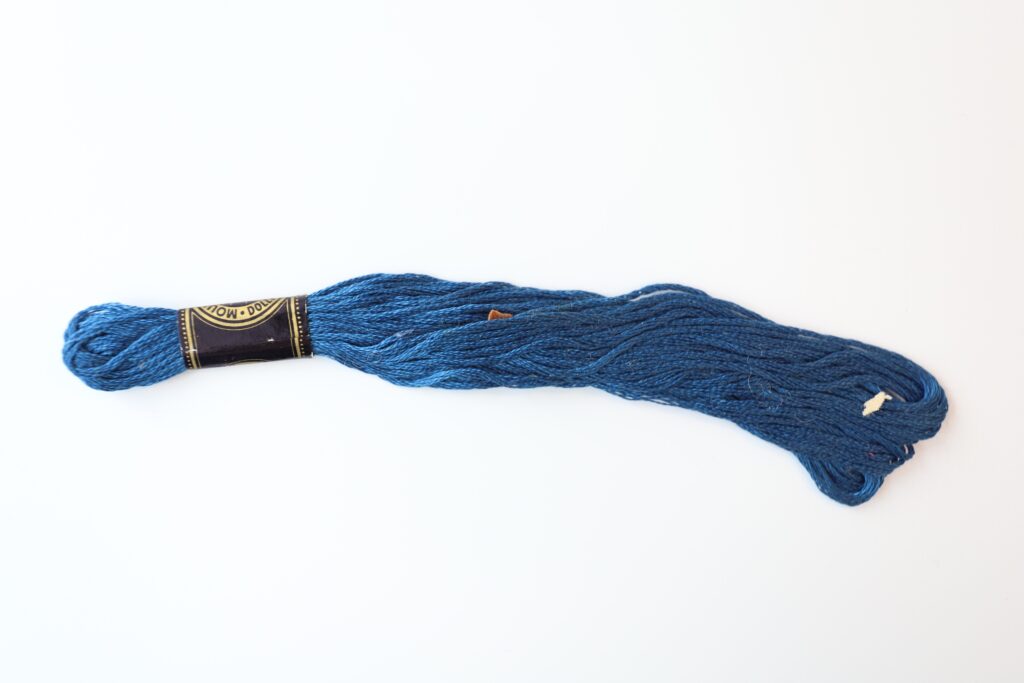Explore
Thread
Blue coloured thread, DMC Mouline Special 8 met 25.

Blue coloured thread, black paper bands with gold print, one of which reads DMC Mouline Special 8 met 25, the other band has an intricate gold print design on one side, the other side has the number 312.
DMC (Dollfus-Mieg and Company) is an French textile company founded in Mulhouse in 1746 by Jean-Henri Dollfus.
Daniel Dollfus, a nephew of Jean-Henri Dollfus, renamed the company “Dollfus-Mieg et Compagnie” on March 21, 1800, after marrying his wife Anne-Marie Mieg, giving us ‘DMC’ today.
On the death of her aunt, Flora Vere O’Brien, in 1970, Mrs Veronica Rowe discovered amongst her grandmother’s papers, a unique record of an industry which promoted the skill of hand embroidery to the highest standards. This small industry was known as “Clare Embroidery”.
Mrs Florence Vere O’Brien, started the first Clare Embroidery class at Newhall, near Ennis, in 1895. The establishment of the class was a response to the plight of families who found it hard to make ends meet. 12 to 15 girls came regularly for two hours weekly. When they became proficient they took away work to do in their own homes.
In 1898 the Vere O’Brien family moved to Ballyalla House, and the Clare Embroidery class continued there with some of the Newhall girls still attending, but now joined by a new group of local girls.
An embroidery class was also established at the Convent of Mercy, Ennis, presided over by Sister Mary Patricia. The designs and materials were provided at first by Mrs Vere O’Brien, to be worked up by the girls under Sister Mary Patricia’s direction in the Convent workroom.
Mina Keppie, a practical Scottish woman, and an excellent needlewoman, held the important post of Manageress in the business. She taught the girls basic stitches, gave out the work, put it together when it was finished, sent out invoices, and kept accounts. Florence Vere O’Brien was also deeply committed to the revival of Limerick Lace. She helped to set up the Limerick Lace Training School in 1889, and took over complete responsibility in 1893. She continued to run both enterprises for many years. The Limerick Lace School closed in 1923, but Clare Embroidery continued until the 1930s.
The embroidery patterns often include floral and other motifs associated with the Irish countryside. The use of red, white and blue threads comes from the French influence that Mena Keppie picked up while working as a governess there.
Collection: Clare Embroidery
Category: Needlework Equipment